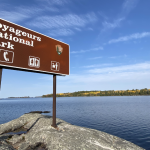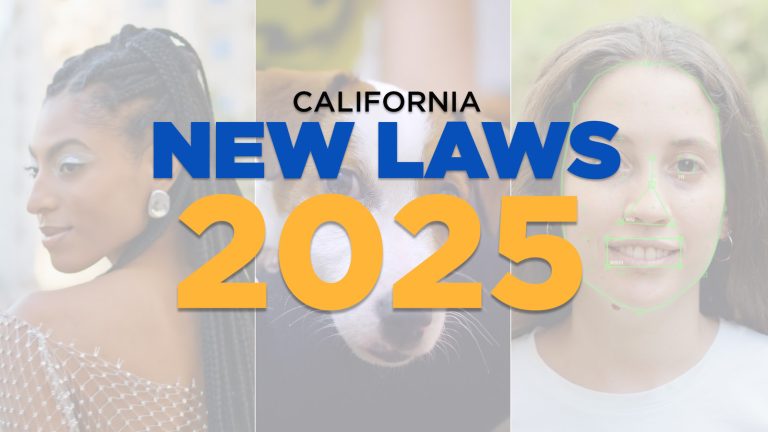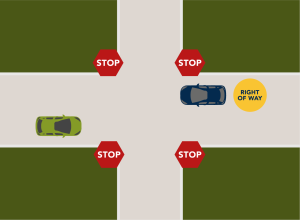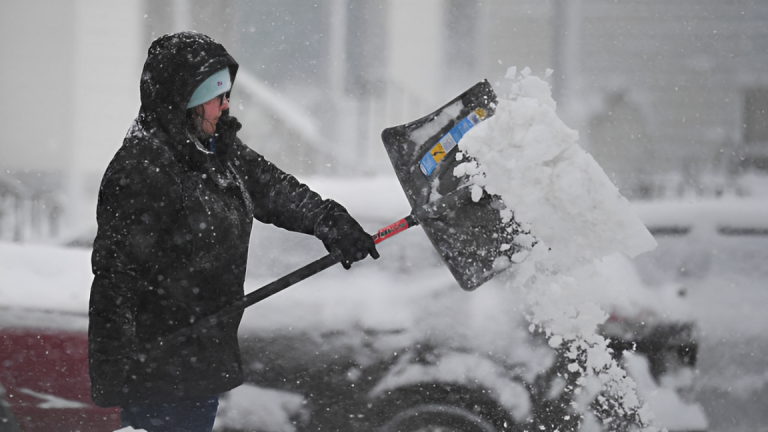When driving in Idaho, understanding the right of way laws is essential for maintaining road safety. Right of way rules dictate who should yield, who has priority, and how traffic should flow at intersections, crosswalks, and other key points on the road. Whether you’re a new driver or have been on the road for years, knowing and following these laws will help prevent accidents and ensure that everyone on the road is safe.
In this article, we will break down the right of way laws in Idaho, explaining the most common situations where these rules apply. Whether you are driving on busy streets or quiet rural roads, it’s important to be aware of these regulations so that you can drive responsibly and courteously.
What Does “Right of Way” Mean?
The term “right of way” refers to the legal right of one vehicle or road user to proceed ahead of others in a particular situation. When you have the right of way, other drivers or pedestrians are required to yield to you. If you don’t have the right of way, you must yield to others.
While the rules are straightforward, situations on the road can sometimes become confusing. In these cases, it’s crucial to remain cautious, stay alert, and always prioritize safety over speed or convenience.
Key Right of Way Situations in Idaho
Let’s look at some of the most important right of way laws in Idaho. These situations cover a variety of scenarios, including driving at intersections, interacting with pedestrians, and more.
1. At Intersections Without Signs or Signals
When driving on a road that has no stop signs or traffic signals at an intersection, the general rule in Idaho is that the vehicle on the right has the right of way.
- If two vehicles approach an intersection at the same time, the driver on the right is allowed to proceed first.
- If you are the driver on the left, you must yield to the driver on the right.
This rule helps avoid confusion at intersections that are not controlled by signals or signs.
2. At Stop Signs
Stop signs are one of the most common ways of controlling traffic at intersections. In Idaho, if you approach an intersection with a stop sign, you must come to a complete stop before moving forward.
- If two vehicles arrive at a stop sign at the same time, the vehicle to the right has the right of way.
- If you are turning left at the intersection, you must yield to oncoming traffic.
Drivers must always stop and yield to any other vehicles or pedestrians who have the right of way before proceeding.
3. At Traffic Signals
Traffic signals guide drivers through controlled intersections. In Idaho, when you have a green light, you may proceed through the intersection. However, there are a few important rules to remember:
- Always yield to pedestrians who are crossing the street, even if you have the green light.
- When turning left at a green light, you must yield to oncoming traffic before completing the turn.
If the light turns yellow or red, stop safely, and wait for the signal to turn green again.
4. Pedestrians Have the Right of Way
Pedestrians always have the right of way when they are crossing the road in a crosswalk. This is an important rule to keep in mind, as failure to yield to pedestrians can lead to accidents and fines.
- If you are driving and see a pedestrian in or waiting to cross at a crosswalk, you must stop and allow them to cross the street.
- This rule applies even if you are turning at an intersection with a crosswalk. Always yield to pedestrians, even if they are not fully in the crosswalk.
Pedestrian safety is a top priority in Idaho, so it’s essential to be extra cautious when driving near crosswalks or in areas where pedestrians are likely to be present.
5. School Buses
School buses have strict rules that help protect children. When a school bus has its red lights flashing and the stop arm extended, you must stop your vehicle, regardless of which direction you are coming from.
- You must stop at least 20 feet away from the bus.
- This rule applies on both sides of the road, even if you are traveling in the opposite direction.
Never pass a school bus when its red lights are flashing. Doing so is not only dangerous but also illegal and can lead to heavy fines and penalties.
6. Emergency Vehicles
When an emergency vehicle like a fire truck, police car, or ambulance is approaching with its siren on and lights flashing, you must pull over and yield the right of way.
- If you are on a multi-lane road, you must move to the right side of the road and stop.
- If there is no space to pull over (like in heavy traffic), you should stay put and allow the emergency vehicle to pass as safely as possible.
In Idaho, it is illegal to block the path of emergency vehicles, so always be aware of your surroundings when you hear sirens.
7. Merging onto Highways
When merging onto a highway or freeway, vehicles already on the highway have the right of way. If you are entering a highway, it’s important to adjust your speed to match the flow of traffic and yield to the vehicles already on the road.
If there is a gap in traffic, you can merge safely. However, do not force your way onto the highway if it is not safe to do so.
8. Roundabouts
Roundabouts are becoming more common in Idaho as they help reduce traffic congestion and increase safety. In a roundabout, vehicles inside the circle have the right of way. This means if you are approaching a roundabout, you must yield to vehicles already in the circle.
When exiting a roundabout, make sure to signal your intentions to other drivers. Always yield to pedestrians who may be crossing at the roundabout exits.
9. Bicycles
Cyclists on Idaho roads have the same right of way as drivers. If a cyclist is traveling on a bike lane or crossing at an intersection, you must yield to them.
If you are turning at an intersection, be sure to check for cyclists who may be in your blind spot. It’s crucial to give cyclists plenty of space when passing them, whether you are in a car or on a bicycle yourself.
Key Tips for Drivers in Idaho
- Always Yield When Required: If you’re not sure who has the right of way, it’s better to yield than to risk an accident. Safety should always come first.
- Stop at Stop Signs: Always come to a complete stop at stop signs, even if no other cars are around. Then, yield to any other vehicles or pedestrians before proceeding.
- Watch for Pedestrians: Be especially careful when driving near crosswalks and always yield to pedestrians.
- Be Prepared for School Buses: Always stop when a school bus is picking up or dropping off children. This helps keep children safe on the roads.
- Emergency Vehicles: If you hear sirens or see flashing lights, move to the right and stop to give emergency vehicles a clear path.
- Stay Alert at Roundabouts: Yield to vehicles already in roundabouts and always signal when exiting.
Conclusion
Following Idaho’s right of way laws is key to safe driving. These rules are designed to protect everyone on the road, including drivers, pedestrians, cyclists, and emergency responders. Whether you are driving through intersections, interacting with pedestrians, or sharing the road with cyclists, knowing who has the right of way can help avoid accidents and ensure that the roads are safe for all users.
By following these basic rules, you will not only comply with the law but also promote a safer and more courteous driving environment for everyone.
Disclaimer – Our editorial team has thoroughly fact-checked this article to ensure its accuracy and eliminate any potential misinformation. We are dedicated to upholding the highest standards of integrity in our content.

























+ There are no comments
Add yours